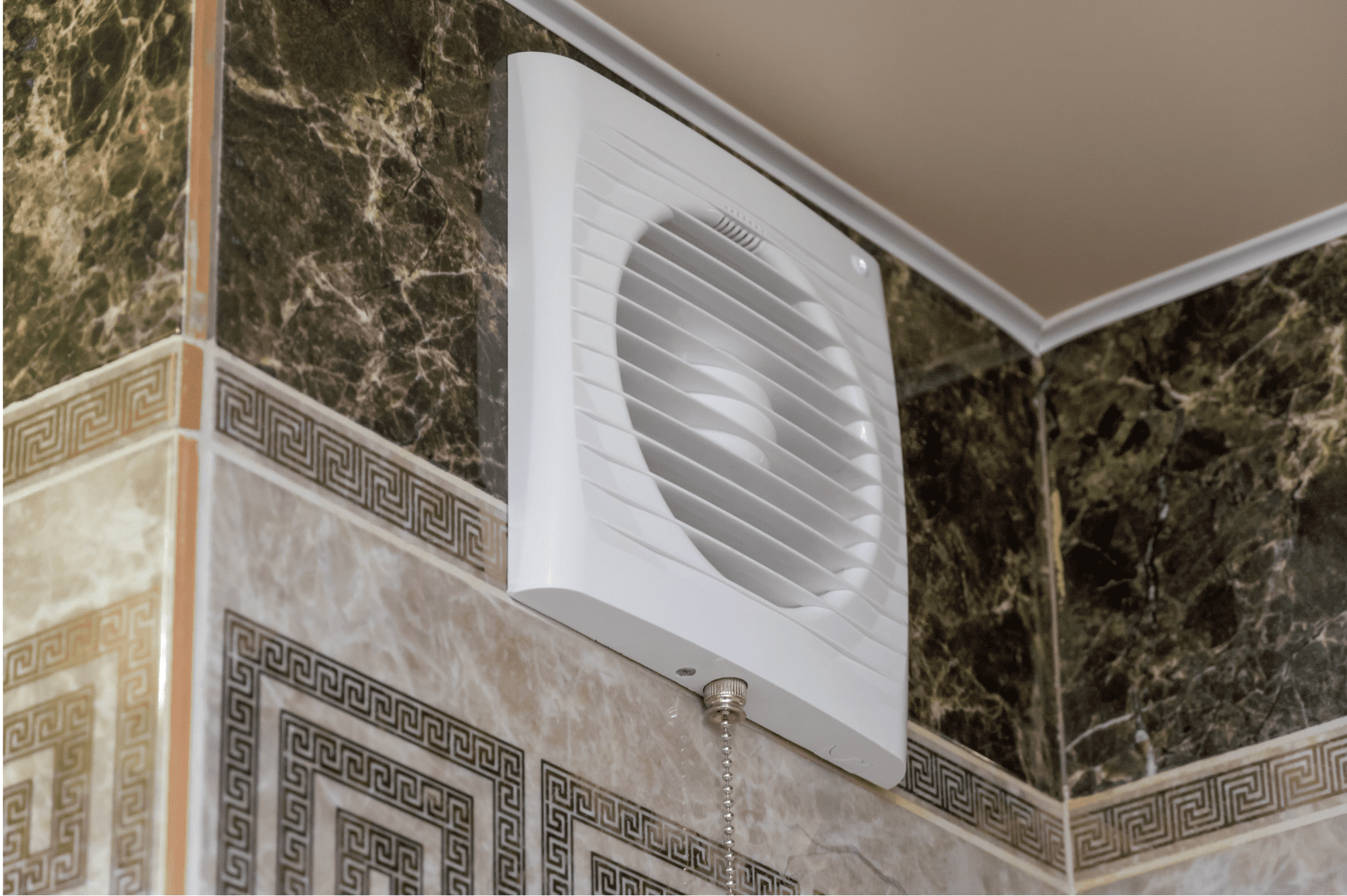When it’s baking hot outside, we all crave a cool and breezy spot at home, right? Now, some folks might get a wild idea: Could we use a bathroom fan to chill out our rooms? Let’s dig into that.
First off, what’s a bathroom fan? You’ve seen it, that little gadget tucked in the ceiling or wall of your bathroom.
Its job? Suck out the steamy air after your hot showers and keep your bathroom fresh, reducing chances of mold and mildew.
But hey, a bathroom fan isn’t like your regular fan or AC. It’s not really in the business of cooling. Yet, here’s an interesting thought: Could this little venting tool also help beat the heat?
To answer that, we’ll first need to understand how bathroom fans work. So, are you ready? Let’s dive into this unusual topic and see if a bathroom fan could be a hidden gem in your fight against summer heat!
Let’s Talk Bathroom Fans
How Does a Bathroom Fan Work, Really?
A bathroom fan is pretty straightforward. It’s a venting machine that pulls out the stale, damp air from your bathroom. Flip the switch, and it gets to work!
The spinning fan blades stir up the air, making a mini vacuum that sucks up the muggy or stinky air. That air hits the road, traveling through ducts and out of your house, usually through a vent in the roof or sidewall.
And check this out: Many modern bathroom fans have a built-in damper. It’s a nifty little flap in the vent duct that shuts when the fan’s off.
Why? It keeps outdoor air from sneaking in when you’re not using the fan.
So, What’s It Really For?
Bathroom fans have two main gigs: ventilation and drying out the damp.
First up, ventilation. We all know bathrooms can get a little… ripe. That’s where your fan comes in. It whisks away those not-so-fresh smells, keeping the air in your bathroom clean.
But here’s the real hero move: drying out the damp. After a hot shower, steam settles on just about everything—walls, mirrors, windows, you name it.
Let it hang around, and you’re inviting mold, mildew, and peeling paint or wallpaper. Worse, you could end up with rot damage.
Bathroom fans help dodge these problems by getting rid of the extra humidity, keeping your bathroom healthier and your fixtures and finishes intact.
Now that we’ve got the basics down, let’s tackle the big question: Can a bathroom fan actually cool a room?
Let’s figure out if a bathroom fan could really do the trick.
Bathroom Fan: Cooling Hero or Not?
Could a Bathroom Fan Pull Off Cooling?
Bathroom fans aren’t exactly famous for their chilling powers. They’re more about venting stinky and steamy air out, right?
But here’s a twist: They might impact a room’s temperature, given the right circumstances.
Picture this: You’ve just taken a hot shower on a scorching day. The air in your bathroom is hotter than outside.
Now, turn on that bathroom fan! It might help suck out that hot air quicker, letting cooler air from elsewhere slide in.
Or, imagine you’ve somehow got a bathroom fan in another room (don’t ask me why!).
There’s a window open, and it’s a cool day outside. The fan could help push out the room’s warmer air, making way for the cool breeze to come in.
But remember, these scenarios hinge on a bunch of factors, like the temperature difference between inside and out, room size, insulation, and how your fan is set up.
But What’s the Catch?
Sounds promising? Hold up. Using a bathroom fan for cooling has some serious limitations and potential issues.
Firstly, bathroom fans aren’t made for all-day use. They’re meant for short bursts of use, like during and after a shower. Running one for too long could fry the motor and can even cause a fire.
This video goes over how bathroom vents can be a hidden fire danger in your home.
Secondly, compared to regular fans or ACs, bathroom fans aren’t as powerful and don’t circulate air as well. They’re built to clear the air in small bathrooms, not to cool larger spaces.
Thirdly, bathroom fans vent air outside, which can create a sort of vacuum indoors. This could cause issues, especially with appliances like furnaces or water heaters, creating dangerous conditions.
So, while a bathroom fan might slightly tweak a room’s temperature under very specific conditions, it’s not exactly a go-to cooling solution.
Conclusion
While a bathroom fan’s primary role is to ventilate and eliminate dampness, it might slightly alter a room’s temperature under very specific circumstances.
However, its potential drawbacks and limitations, such as the risk of motor burnout, inadequate cooling power, and safety concerns, make it a less desirable alternative for cooling purposes.
Simply put, bathroom fans aren’t designed to be your hot weather heroes.
